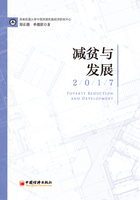
本章参考文献
[1] 江曼琦,翁羽.少数民族迁移就业的成本和收益与城市民族工作的开展[J].云南社会科学,2010(1):26-29.
[2] 李小云,于乐荣,齐顾波.2000—2008年中国经济增长对贫困减少的作用:一个全国和分区域的实证分析[J].中国农村经济,2010(4):4-11.
[3] 张萃.中国经济增长与贫困减少——基于产业构成视角的分析[J].数量经济技术经济研究,2011(5):51-62.
[4] Fosu A K. Inequality and the Impact of Growth on Poverty: Comparative Evidence for Sub-Saharan Africa[J]. Journal of Development Studies, 2009, 45 (5): 726-745.
[5] Gaurav Datt and Martin Ravallion. Is India's Economic Growth Leaving the Poor Behind? [J]. Journal of Economic Perspectives, Volume 16: 3, Summer 2002: Pages 89-108.
[6] Hasan R, Quibria M G. Industry Matters for Poverty: A Critique of Agricultural Fundamentalism[J]. International Review for Social Sciences, 2004, 57 (2): 253-264.
[7] Montalvo J G, Ravallion M. The Pattern of Growth and Poverty Reduction in China[J]. Journal of Comparative Economics, 2010 (38): 2-16.
[8] Ravallion M, Chen H S. China′s (uneven) Progress against Poverty[J]. Journal of Development Economics, 2007, 82 (1): 1-42.
[9] Seetanah B, Rojid, S, Shalini, R. Sectoral Growth and Poverty Reduction: A Dynamic Approach[J]. International Journal of Business Strategy, 2008, 8 (3): 24-43.
[10] Thorbecke E, Jung H S. A Multiplier Decomposition Method to Analyze Poverty Alleviation[J]. Journal of Development Economics, 1996, 48 (2): 279-300.